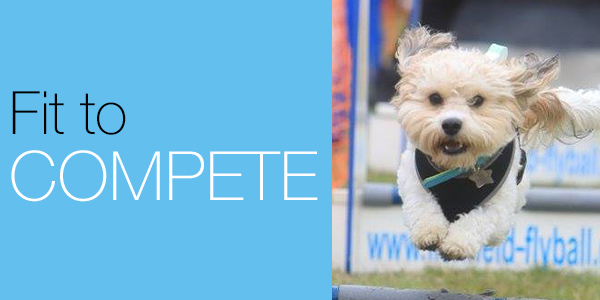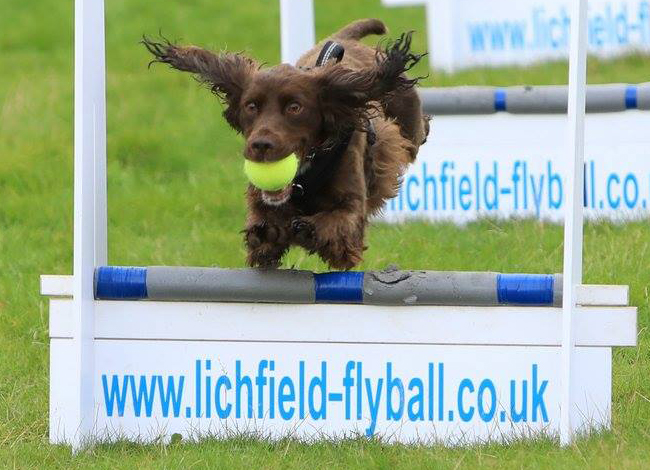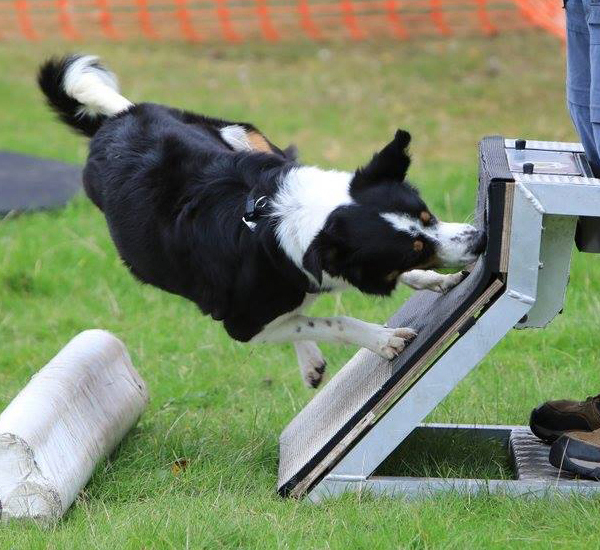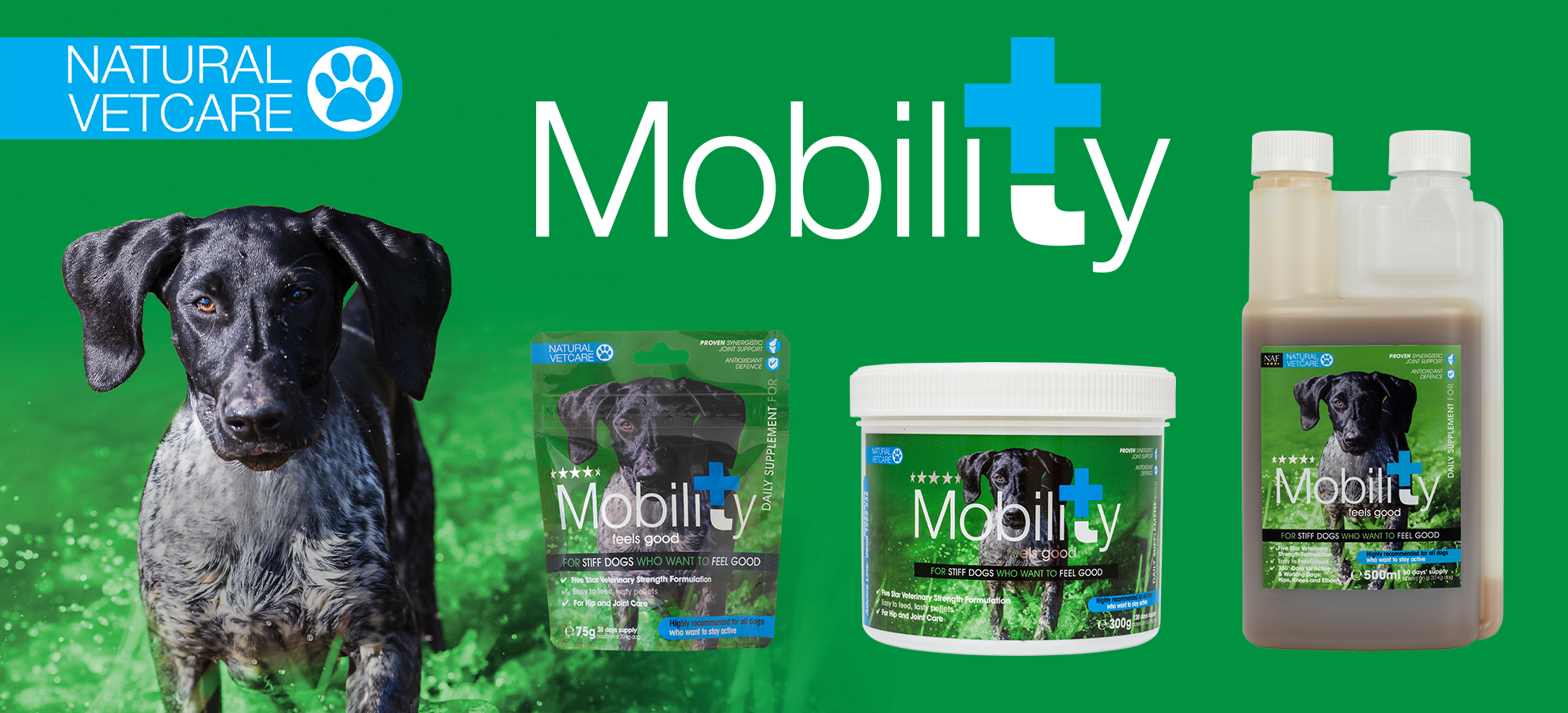




Is your dog ready to 'fly'?!
If you’ve got a healthy, active dog you’ll know that walks alone are not always enough to fulfil their need for exercise. Any dog will benefit from a range of exercise choices, which challenge them both physically and, just as importantly, mentally. Dog's brains like a job to do!
Two of the most 'fast and furious' sports are Agility and Flyball. Dog Agility first came to the UK in the late 1970s, with its first competition at Crufts in 1978; while Flyball is younger, first appearing at Crufts in 1990. However, if you’ve visited Crufts in recent years you can’t fail to have noticed the Flyball competition – it's not called 'the noisy sport' for nothing, where great excitement can mean plenty of barking! Both sports require precision and training from both handler and dog to be successful.
Like any sport, there are risks involved.
Agility and Flyball are high-speed, involving sprinting, jumping and tight turns. In Agility, dogs may be jumping 60cm high, or negotiating an A frame nearly two metres off the ground. While in Flyball, catching the ball and turning quickly is key. Good Flyball dogs learn the 'swimmers turn' where they trigger the box with their front feet, turn 180o, and push away with their back feet in one smooth movement.
Research has found in Agility and Flyball the risk of injury is similar, with approximately 30-40% of dogs having had at least one injury1,2. Torsion and concussion puts pressure on joints and soft tissue, and injuries to the paws and nails are also commonly reported. However, of course, this does not mean that our dogs shouldn't be out there enjoying themselves as canine athletes. Just as with ourselves, the many benefits of their fitness and having fun with our dogs far out-way the risks – we just need to ensure we are taking reasonable steps to prevent injury.
Firstly, your dog needs to be mature enough to ensure joint and bone strength. It is recommended that puppies are at least twelve months old before starting. However, those early months need not go to waste as basic obedience is key for both. Get down to your local puppy class and get that Sit, Stay and Recall nailed! Once you’re ready to start choose a reputable local group who can get you and your dog started in a safe and fun way. The Kennel Club or the sport authorities will help you find a local club.


It is important to think about targeted support for their soundness from early on, as the research shows younger dogs are at greater risk of injury1,2.
Firstly ensure your dog is fit not fat, as carrying excess weight will increase the stress on the joints. Recent research shows the use of nutritional supplements is growing. One survey reported over 75% of Flyball dogs have a nutritional supplement, and those are mainly for joint support3. Glucosamine is well-proven across species, including dogs, however athletic stress is complex and so requires a complex answer, as a single ingredient is unlikely to be effective. Therefore, it is in the combination nutraceuticals blending nutrients like glucosamine, chondroitin sulphate and hyaluronic acid where the research results are seen3,4. By adding in synergistic nourishment of the joint capsule and soft tissue health, such as MSM, Omega 3 fatty acids and the antioxidant vitamins, C and E, we can provide all round nutritional support for the ultimate canine athletes.
What are you waiting for? With targeted nutrition in their daily care, you can get out and enjoy fast and furious fun for you and your dog – whatever their breed, age or type.
Kate Hore. RNutr, R.Anim.Technol : Nutritionist at NaturalVetcare
Selected References
- Cullen K.L. et al (2013) Survey-based analysis of risk factors for injury among dogs participating in Agility training and competition events. J.Am.Vet.Med.Assoc. 243(7) 1019-24
- Montalbano C et al (2019) Internet survey of participant demographics and risk factors for injury in Flyball dogs. Front.Vet Sci Nov 14;6:391. doi: 10.3389/fvets.2019.00391.
- Musco N et al (2019) Effects of a nutritional supplement in dogs affected by osteoarthritis. Vet. Med. Sci. 5(3) 325-335
- Alves J.C et al (2017) Effect of an Oral Joint Supplement when compared to Carprofen in the management of hip osteoarthritis in working dogs. Top. Companiona Anim. Med. 32(4) 126-129
CONTACT
Copyright © Natural VetCare 2019
Security & Privacy | Cookies | Terms & Conditions







